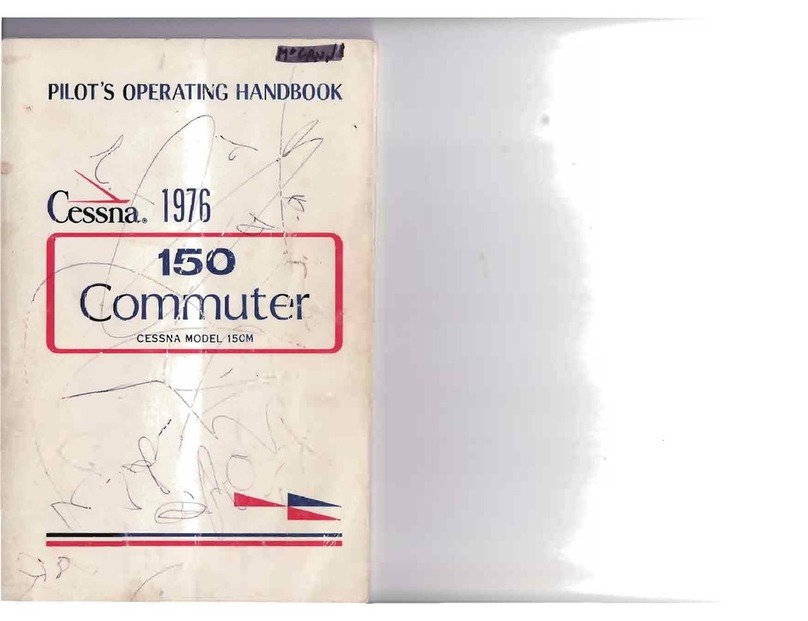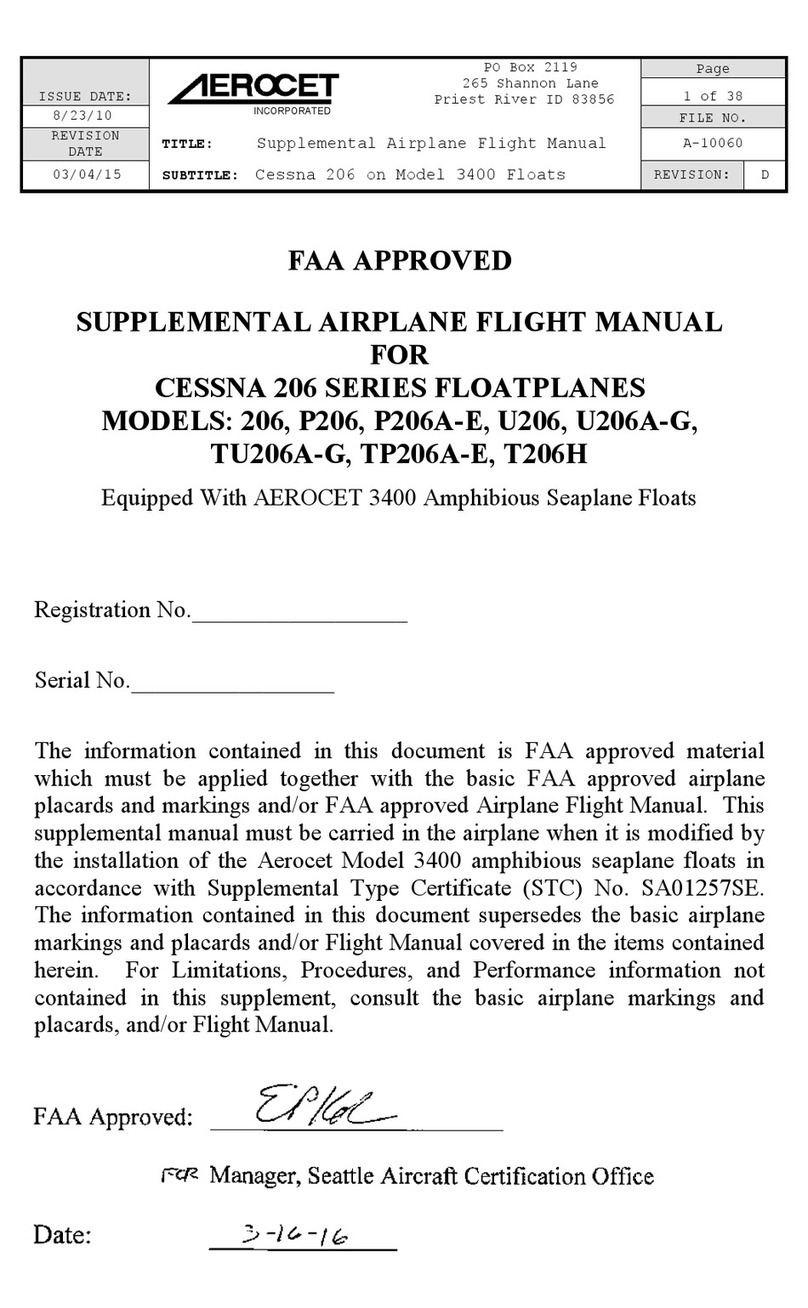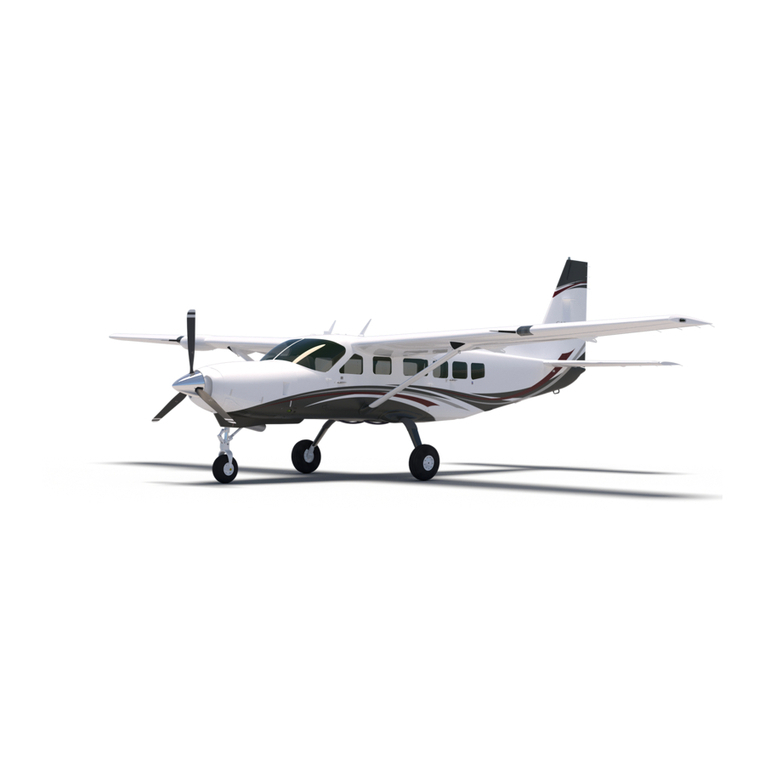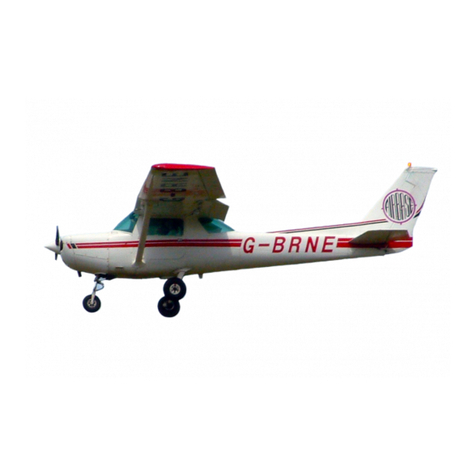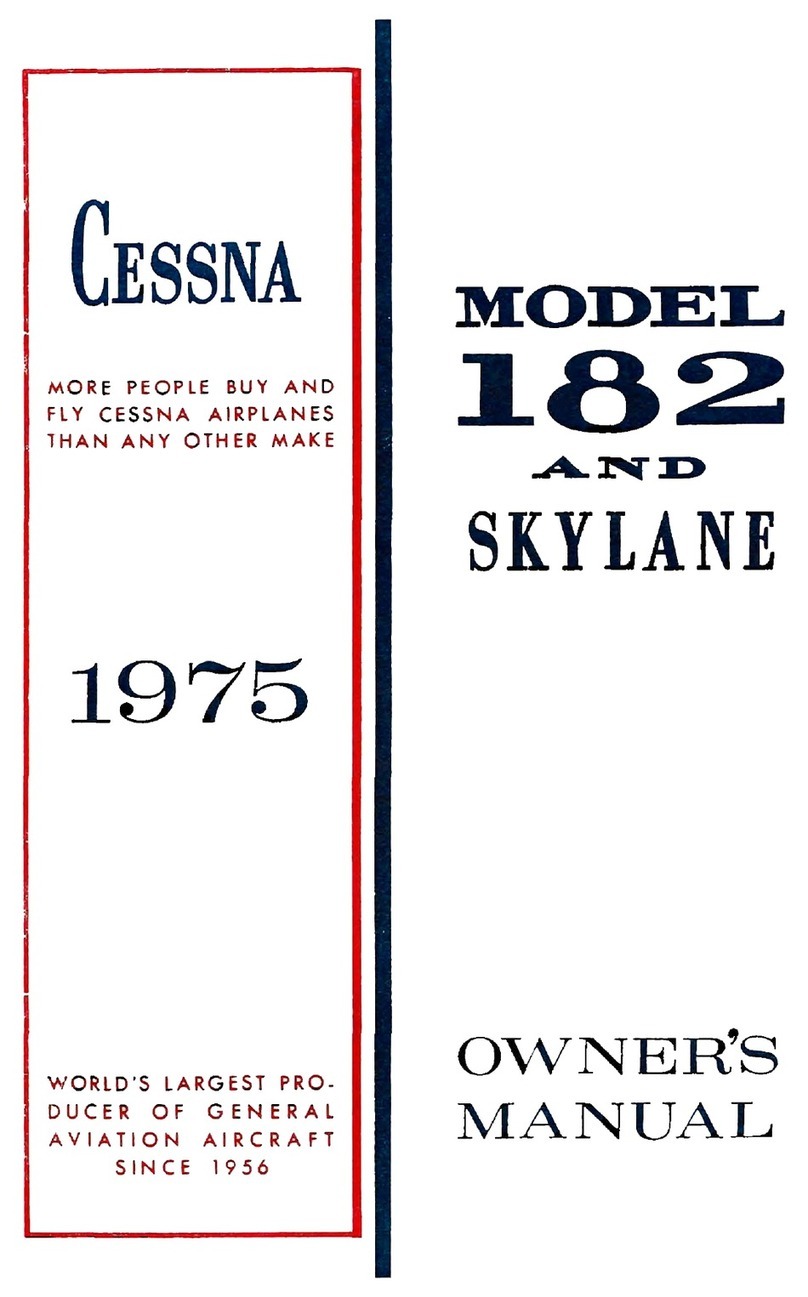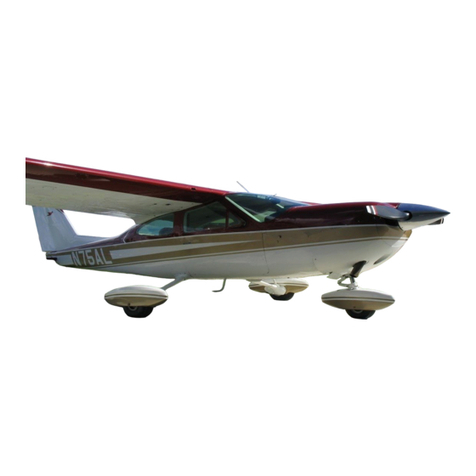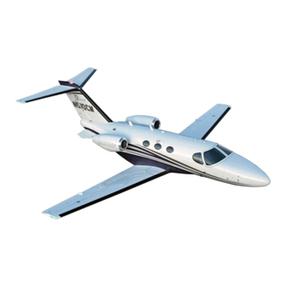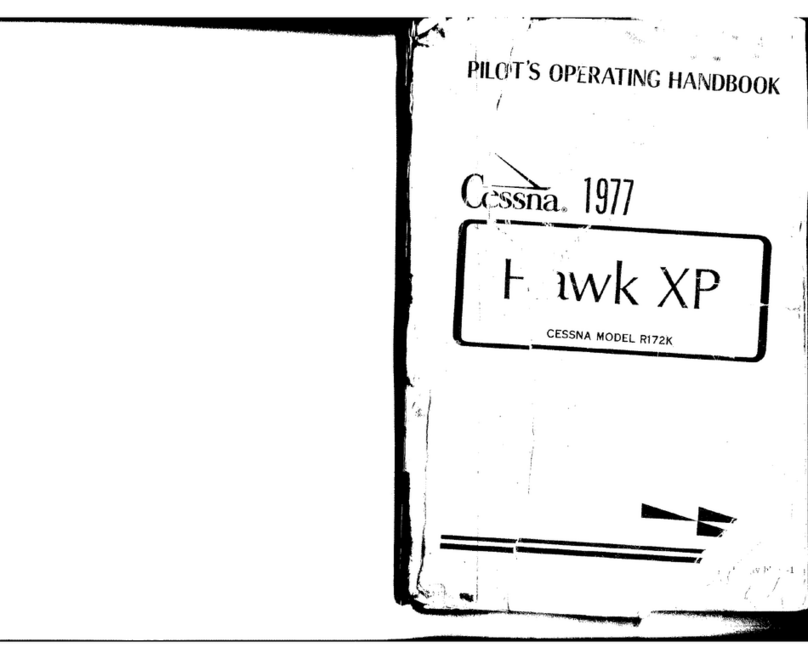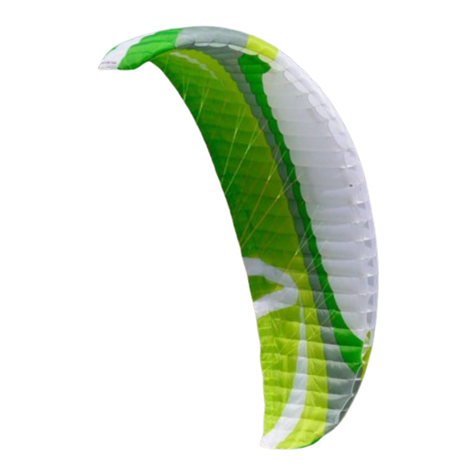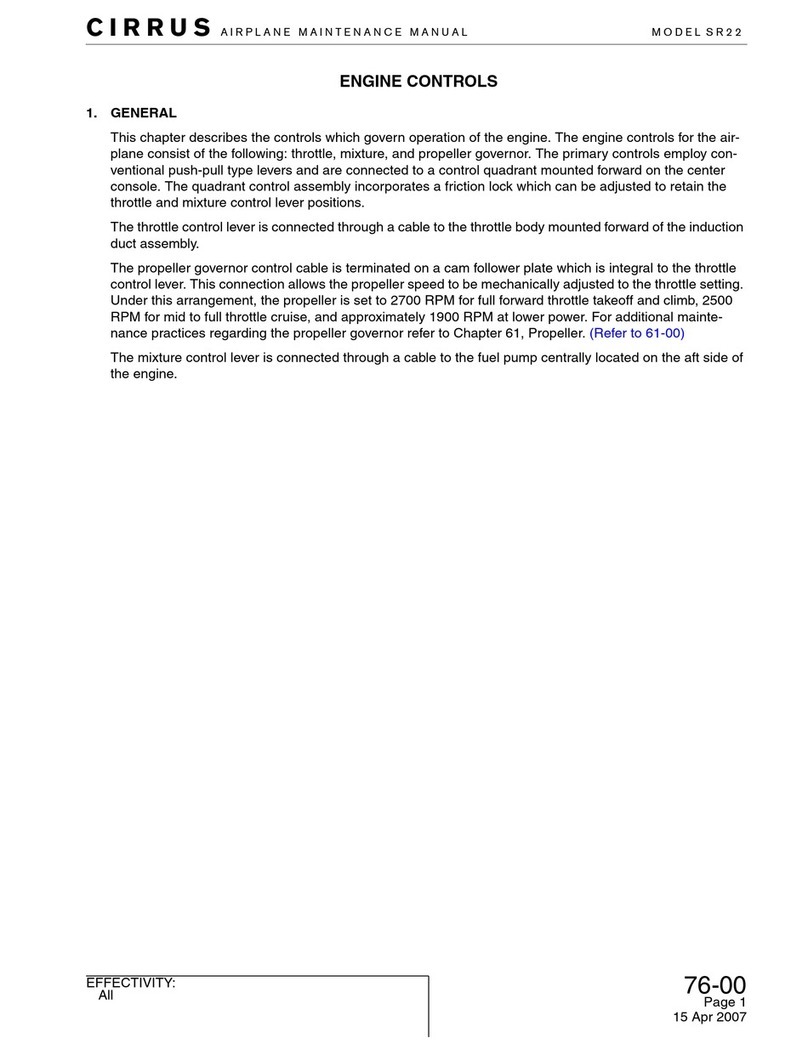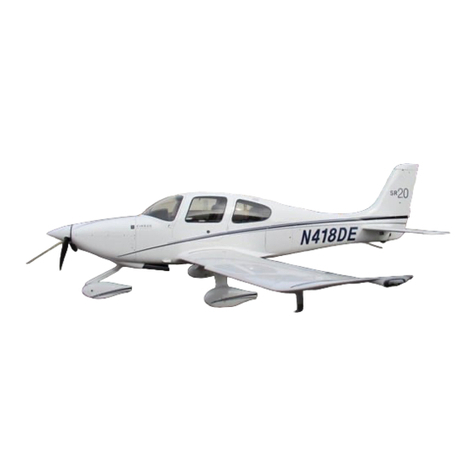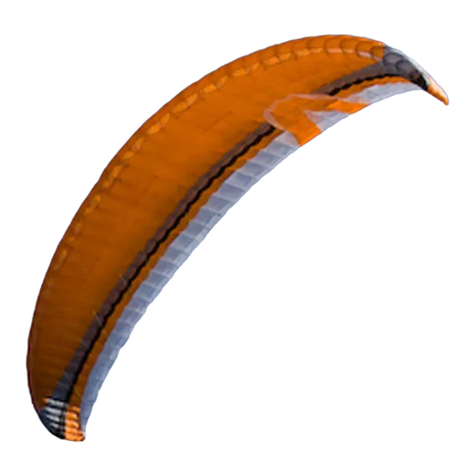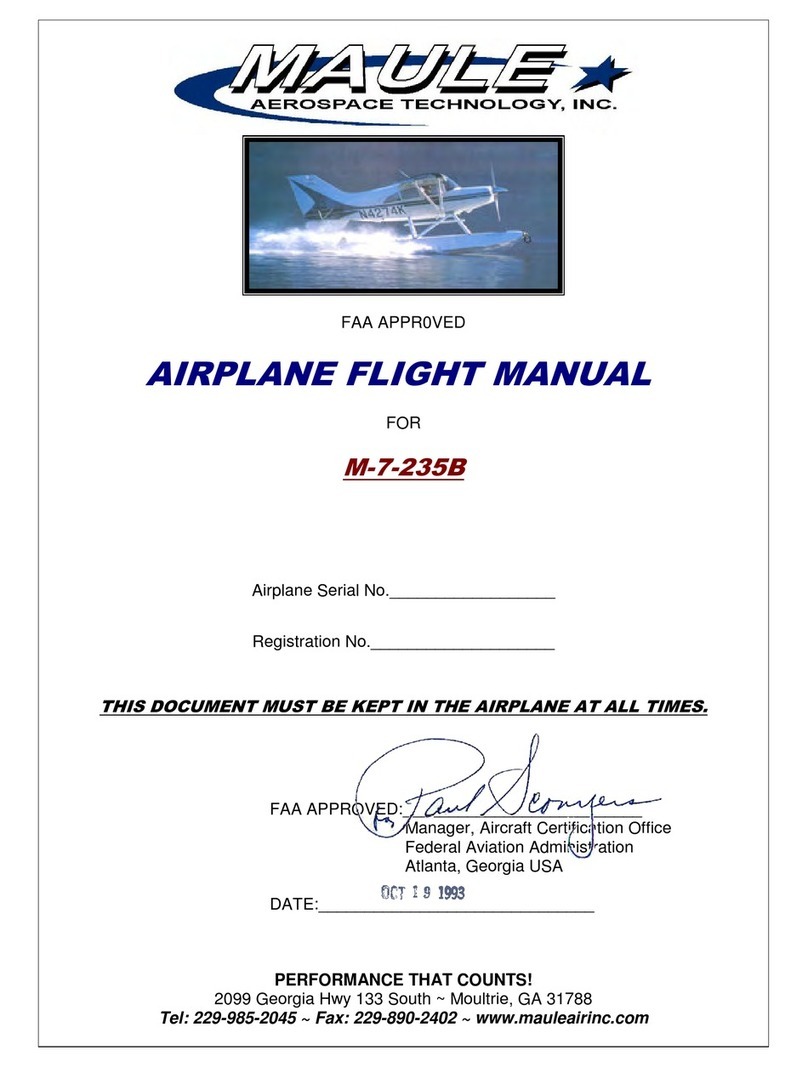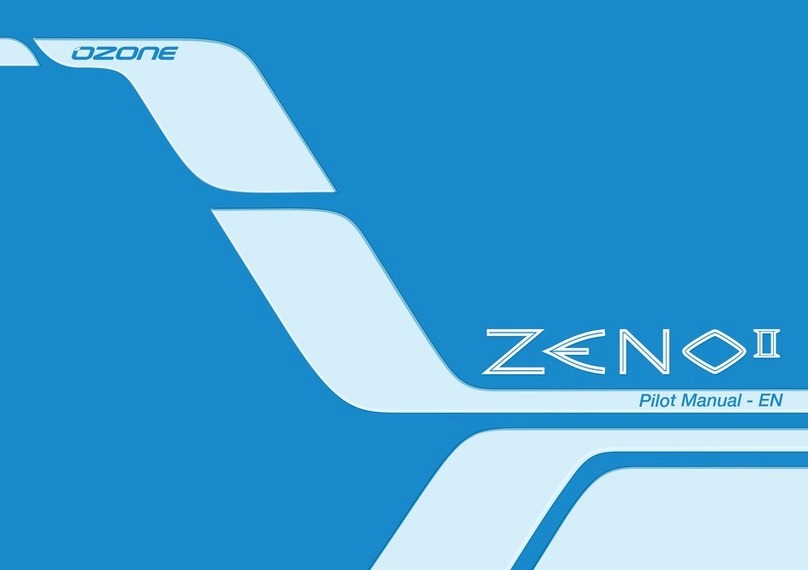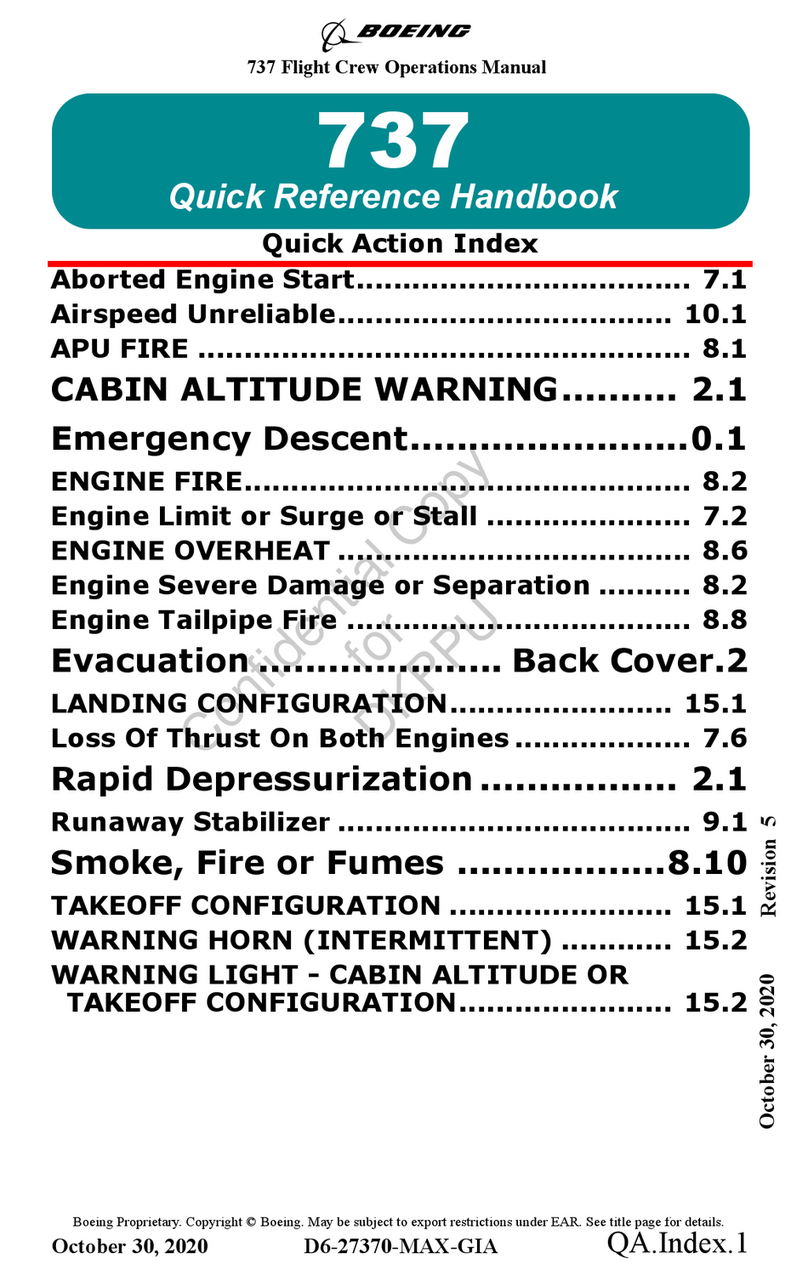a.
Remove rudder gust lock, if installed.
b.
Disconnect tail tie-down.
c.
Check control surfaces for freedom of movement and security.
0
a. Check aileron for freedom of movement and security.
0
a. Disconnect wing tie-down.
b.
Check main wheel tire for proper inflation.
c.
Before first flight of the day and after each refueling, use
sampler cup and drain small quantity of fuel from fuel tank sump
quick-drain valve to check for water, sediment, and proper fuel
grade.
d.
Visually check fuel quantity; then check fuel filler cap secure.
0
a. Check oil level. Do not operate with less than six quarts. Fill
to eight quarts for extended flights.
b.
Before first flight of the day and after each refueling, pull out
strainer drain knob for about four seconds to clear fuel strainer
of possible water and sediment. Check strainer drain closed.
If water is observed, the fuel system may contain additional
water, and further draining of the system at the strainer, fuel
tank sumps, and fuel selector valve drain plug will be necessary.
c.
Check propeller and spinner for nicks and security.
d.
Check landing light(s) for condition and cleanliness.
e.
Check carburetor air filter for restrictions by dust or other
foreign matter.
f.
Check nose wheel strut and tire for proper inflation.
g.
Disconnect tie-down rope.
h.
Inspect flight instrument static source opening on side of
fuselage for stoppage (left side only).
a.
Check main wheel tire for proper inflation.
b.
Before first flight of the day and after each refueling, use
sampler cup and drain small quantity of fuel from fuel tank sump
quick-drain valve to check for water, sediment, and proper fuel
grade.
c.
Visually check fuel quantity, then check fuel filler cap secure.
0
a. Remove pitot tube cover, if installed, and check pitot tube
opening for stoppage.
b.
Check fuel tank vent opening for stoppage.
c.
Check stall warning vent opening for stoppage.
d.
Disconnect wing tie-down.
0
a. Check aileron for freedom of movement and security.
1-3
